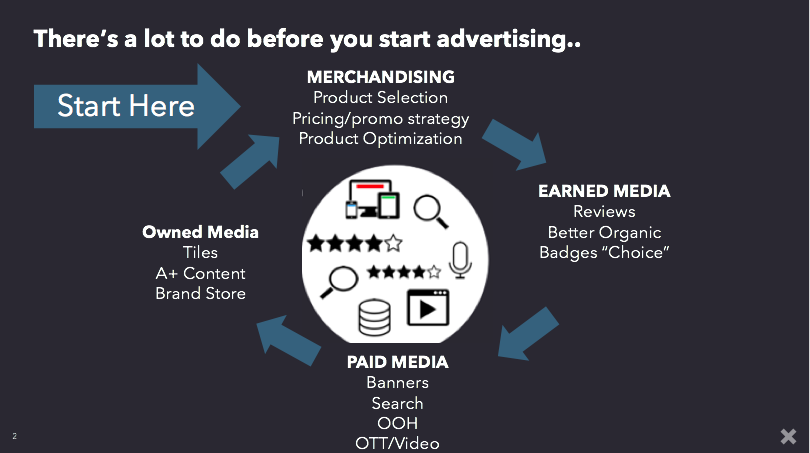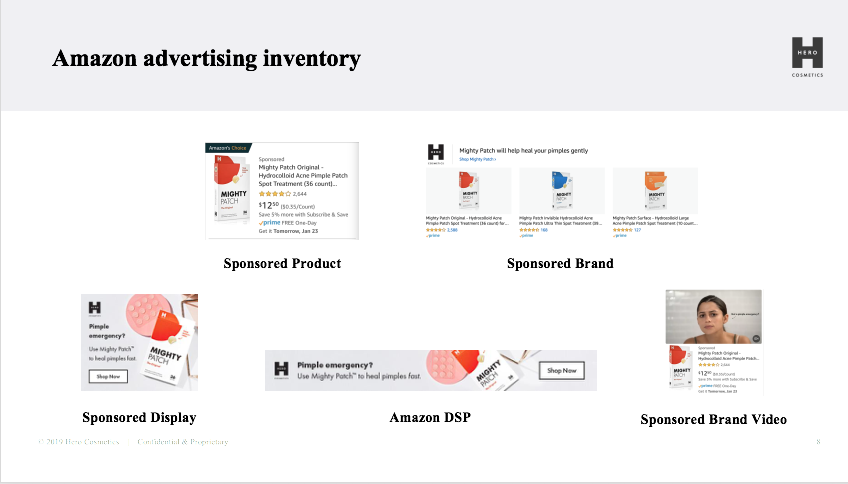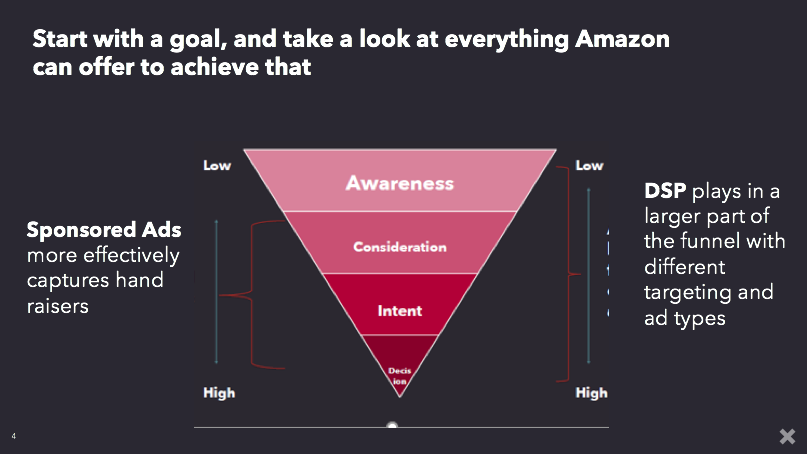
The duopoly is officially a troika. Amazon reported last week that its ad business generated $4.8 billion in revenue in the quarter, 41% higher than the same period a year ago.
At Digiday Media’s recent Amazon Strategies event, a series of Amazon advertising experts instructed attendees on making the most out of Amazon’s advertising platform, and making sense of the basic offerings.
The basics
Amazon advertising is unique because it doesn’t live in a vacuum. The company has always placed advertising on the platform as part of a company’s overall retail approach. As the slide below shows, advertising isn’t the beginning: Companies should think of merchandising, pricing and product first. Then, work on the “earned media” portion — reviews and recommendations, and potentially an Amazon’s Choice Label.

The types of products
There are a few different types of advertising ad products, all under the Amazon Advertising umbrella. The old organization of Amazon Marketing Services and Amazon Advertising Platform (sponsored ads and a DSP) no longer exist.

Using the Amazon DSP
How and when to use various ad products should also depend. Sponsored ads for example can be good at driving handraisers into a funnel, while the Amazon DSP can do a lot more. There are four “levers” to pull, from changing placements to potentially going off Amazon.com, to new ways to target audiences, and using different types of content to do it.

Putting the advertising in context
For brands, because retail is such a large part of the Amazon advertising system, advertising strategies can be broken down in a few areas. For many brands, “owning” their presence on Amazon is a priority, due to issues like copycat products, keyword bidding wars from competitors, and just an ever-present need to win against the algorithm. For example, as Eos director of digital marketing Swati Bothra explained in her presentation, the strategy should begin with a brand “defense,” following by ads both inside and outside the Amazon ecosystem.

Sales matter
While Amazon’s algorithm has often been compared to a black box, ultimately search rank, the true kingpin within Amazon Advertising, is all about sales. That means sales, especially relative to competition, become the most important metric. For campaigns, it’s mostly then all about keyword use: relevance, frequency and volume. As Alan Kwok, who runs growth at Hero Cosmetics explained, it’s about combining keyboards with other variables for campaigns, then tracking the results.
More in Marketing

The Disney-OpenAI deal and generative AI copyright concerns
This week’s Digiday Podcast delves into the copyright concerns and potential trademark issues surrounding brands’ use of generative AI tools, with Davis Wright Tremaine partner Rob Driscoll.

‘There’s tremendous opportunity’: NBA sponsorships lead on European expansion
David Brody, vp, global partner management group lead at the NBA, explains its pitch to sponsor brands and how expansion isn’t far off.

New partnerships, marketing fuel BNPL’s holiday surge
This holiday season, more brands deployed BNPL services with different payment options beyond the more familiar “pay-in-four” structure.






